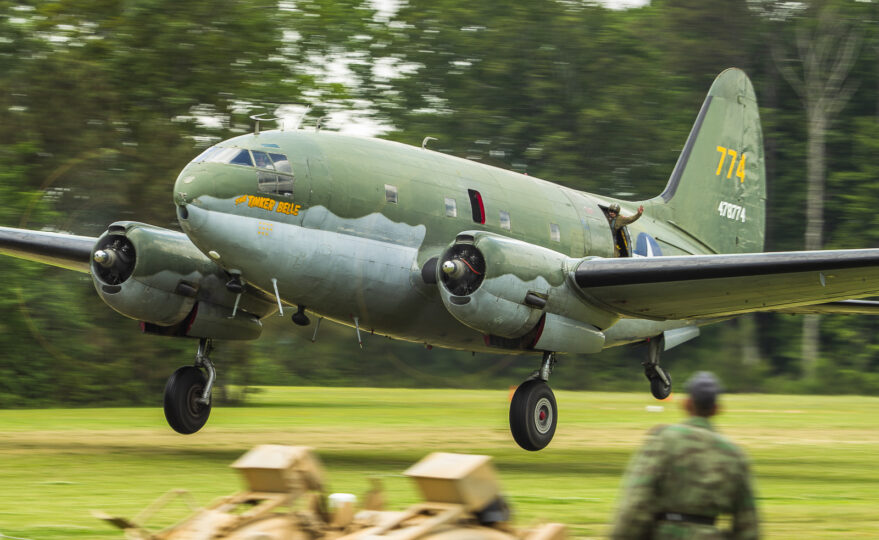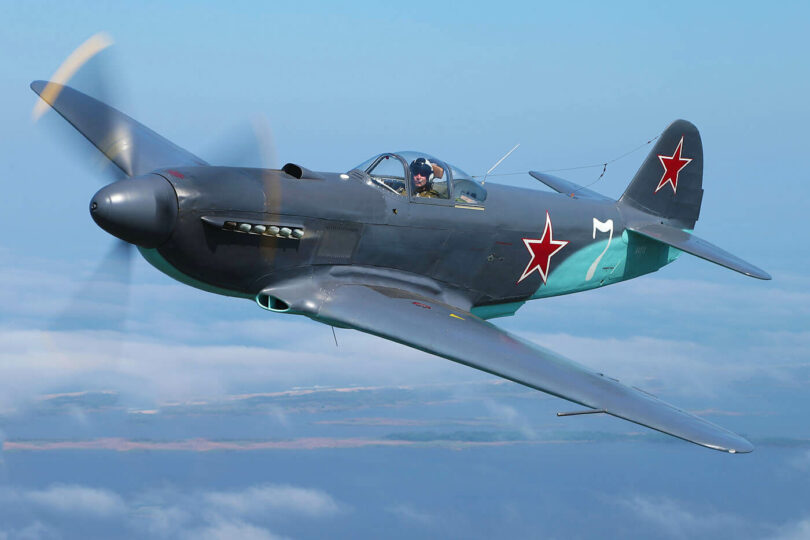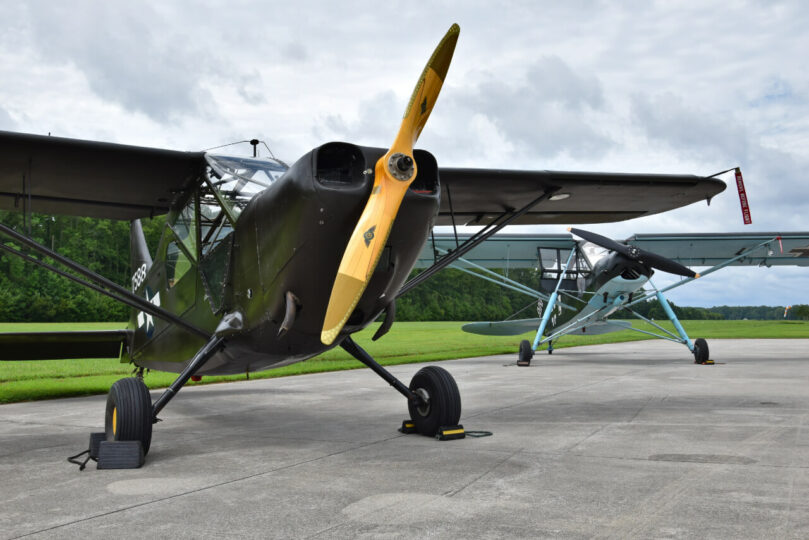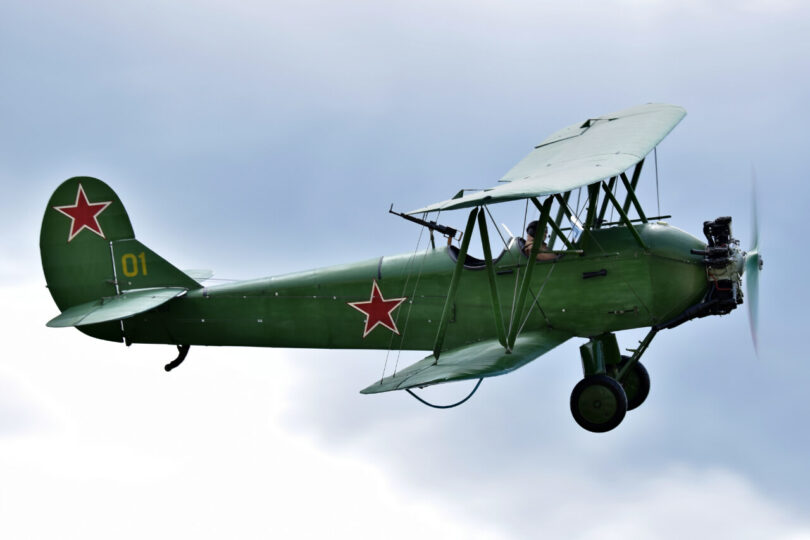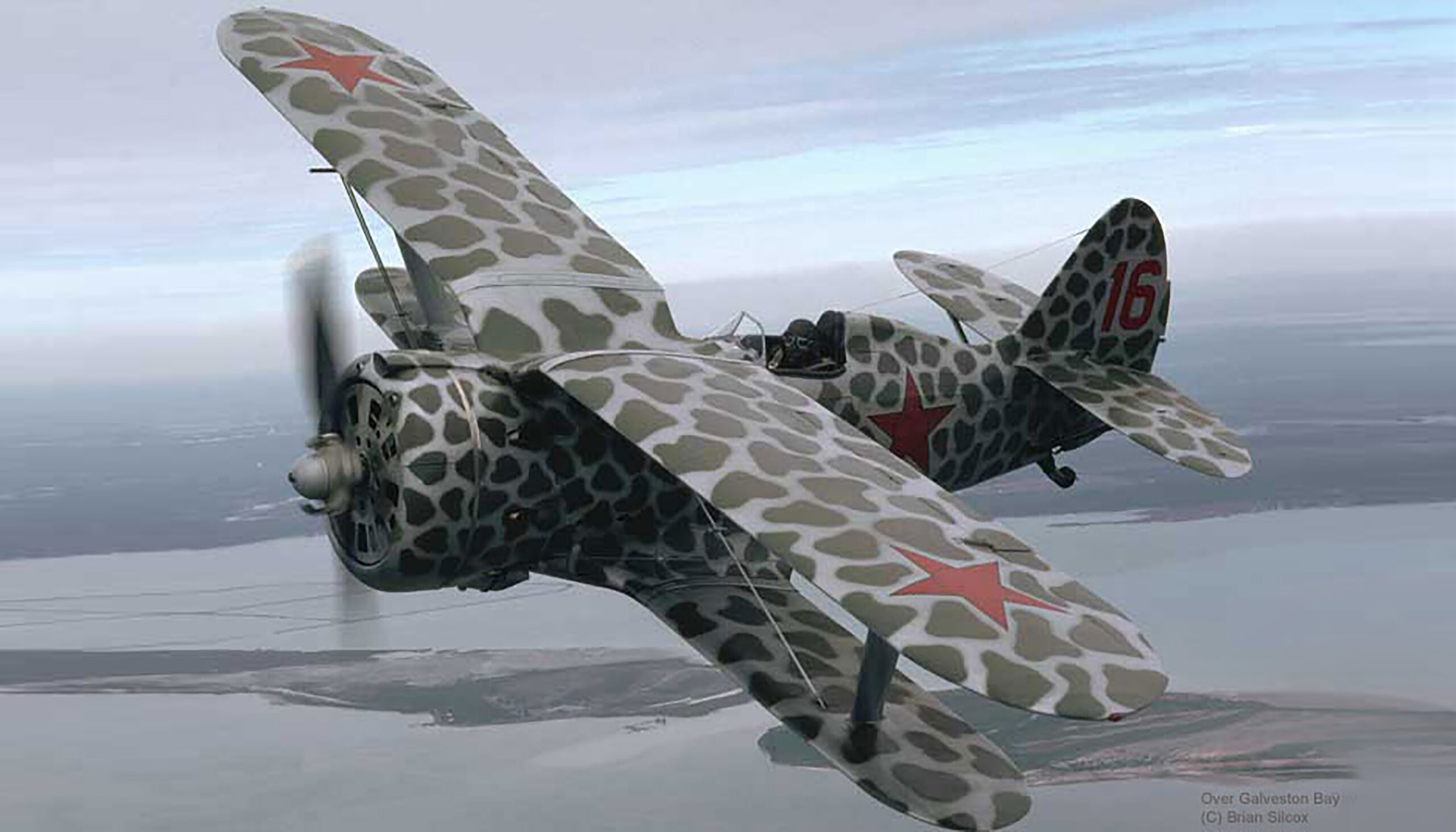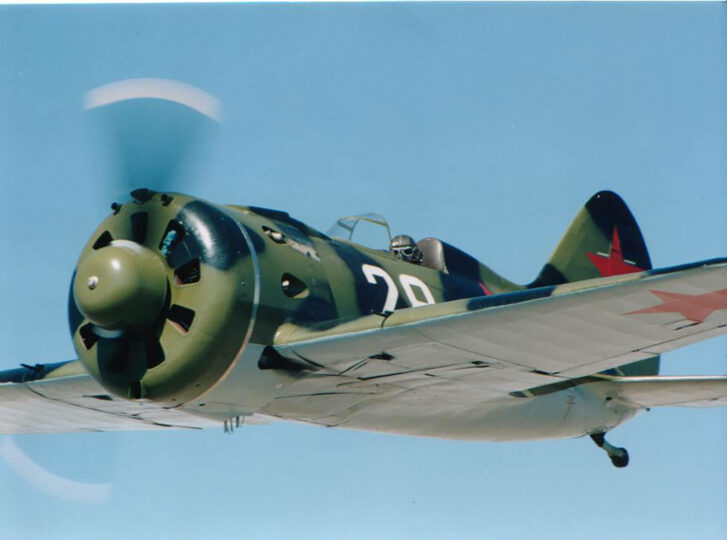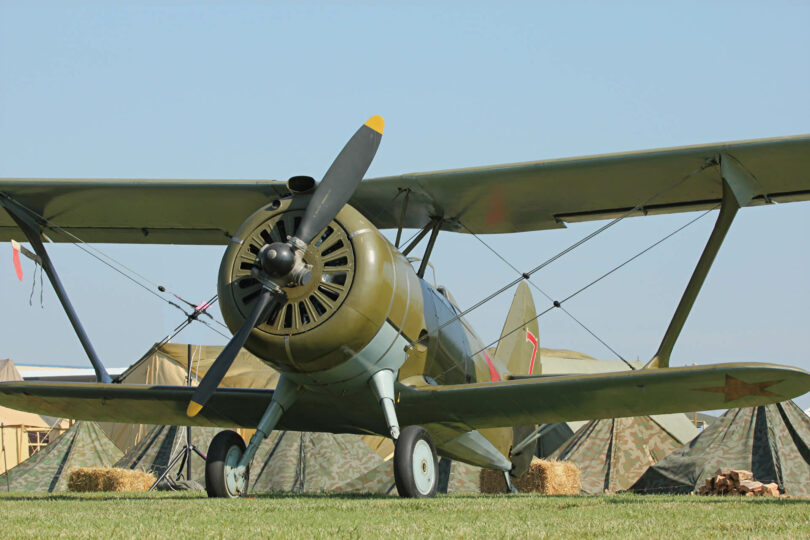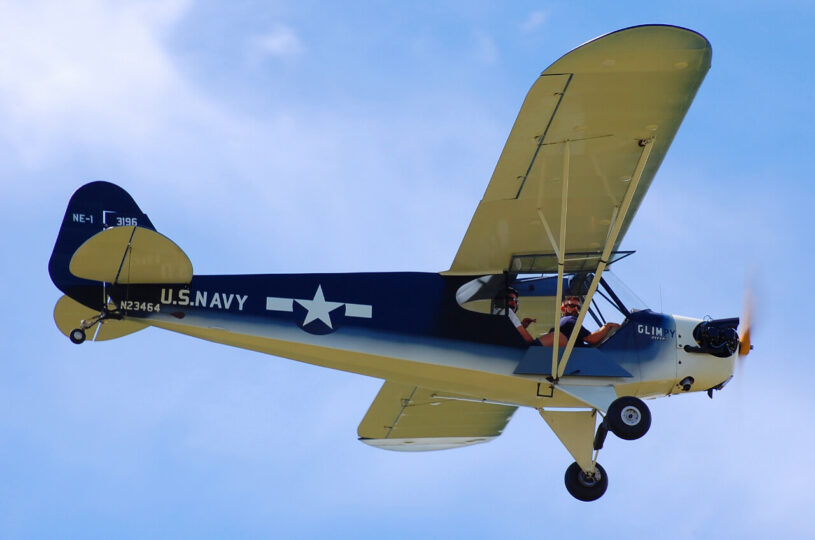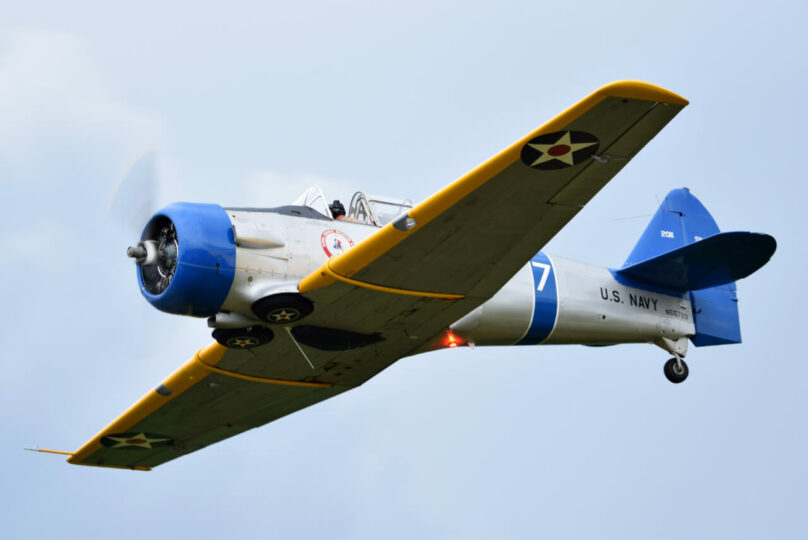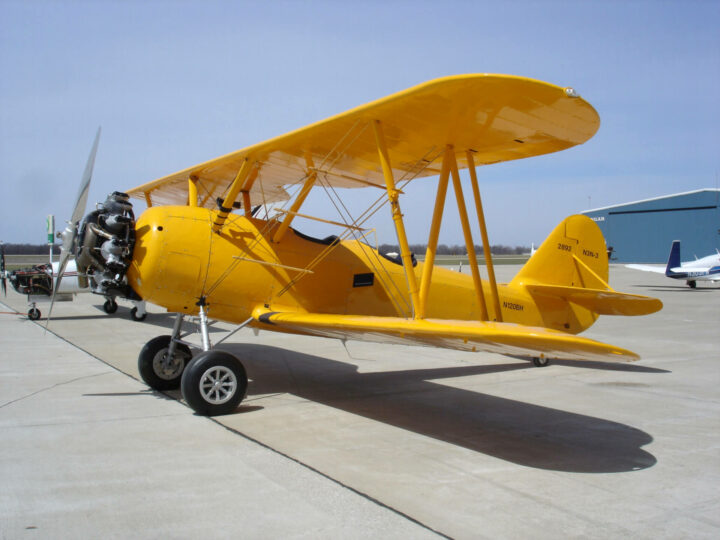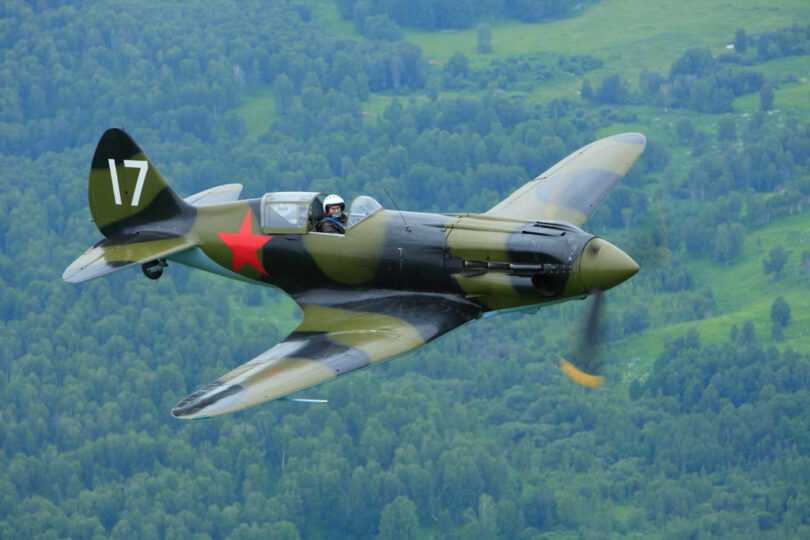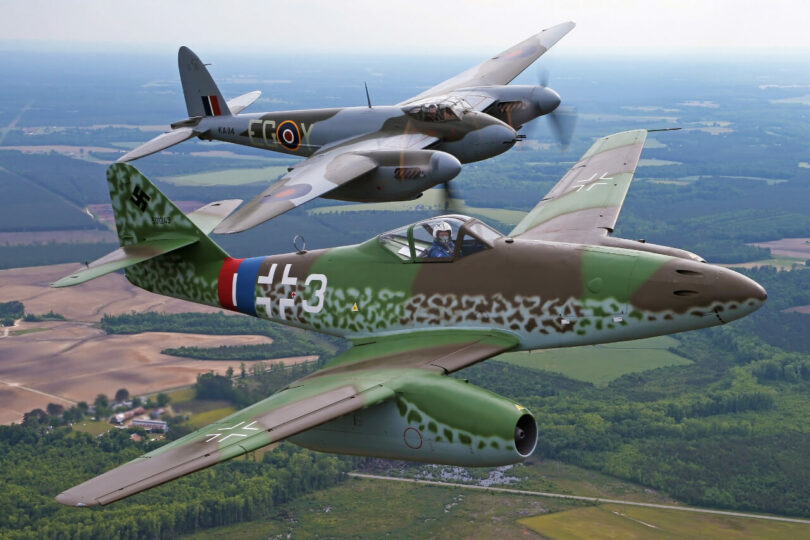The Curtiss C-46 was an unsung hero of WWII. It served in every theatre of the conflict, connecting far-flung garrisons across the globe as part of Air Transport Command. It also played a crucial role in keeping China in the war at a time when Japan had severed all other supply routes into that nation….
One of the smallest and lightest combat fighters of the war, the Yak-3 was easy to maintain and had an impressive power-to-weight ratio. When it entered service in July 1943 it was superior to both the Fw 190 and Bf 109G at altitudes below 16,000 feet.
Liaison Aircraft like the L-5 filled many of the roles played by helicopters in the modern military. Casualty evacuation, artillery and close air support spotting, reconnaissance, delivery of urgent supplies, aerial direction of ground convoys and even the laying of communication wires from the air were all roles regularly filled by the L-5.
A trainer for the Soviet Air Force and the most produced biplane in history, with over 30,000 estimated to have been built, the Po-2 would become famous for its role in night bombing missions on the Eastern Front.
Soviet tactical doctrine for air combat was based on the use of high performance monoplanes, and maneuverable biplanes. These mixed units would have the ability to leverage either strength as needed, or so it was thought.
The I-16 was a revolutionary fighter. In an era of biplanes, it was the first low wing monoplane fighter with retractable landing gear in the world. Introduced in the mid-1930s, it was still a mainstay in the Soviet Air Force on the eve of war.
Developed from the I-5 Fighter Design, the I-15 and later I-15bis would still be in service at the start of Operation Barbarossa, the German Invasion of the Soviet Union.
Originally intended as a trainer and sport plane for the civilian market, the Cub placed aviation within reach of thousands through the Civilian Pilot Training Program. With relatively few modifications, the cub was militarized as the L-4 in Army service, and the NE-1 in Navy service.
With a range of designations for the aircraft based on its branch of service and configuration, the Texan played a vital role as an advanced trainer, providing would-be fighter pilots a final stepping stone before flying single-seat combat aircraft types.
In the years before WWII broke out, the need for training aircraft became apparent. There were concerns about any one manufacturer being able to meet this ballooning need, so the US Navy decided to build their own Primary Trainer.
Designed to tackle the Luftwaffe and its bombers at high-altitude, the nature of combat on the Eastern Front often meant that the MiG-3 had to operate outside of its design parameters.
The Me 262 was the world’s first operational jet fighter. The Museum’s example was reconstructed by Legend Flyers of Seattle, Washington, working from plans that were created during the restoration of the original Me 262 at Willow Grove Naval Air Station.
- « Previous
- 1
- 2
- 3
- 4
- Next »

